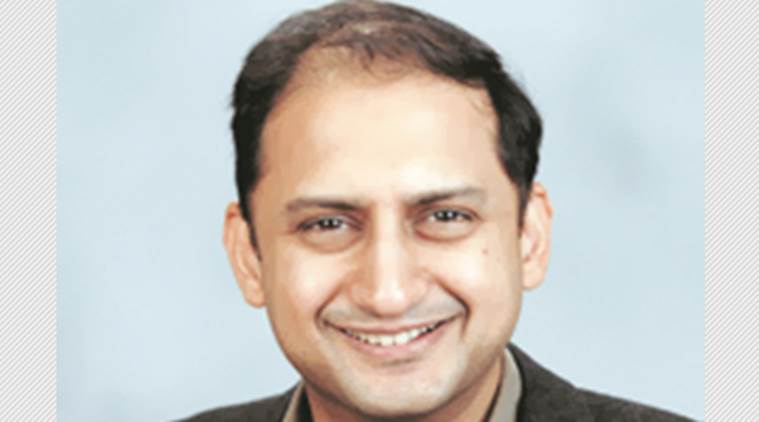Salvaging PSU banks: Viral Acharya proposes re-privatisation, consolidation, sale of assets
Acharya said consolidation would offer the opportunity to rejig management responsibility away from those who have under-performed.
 Deputy RBI Governor Viral Acharya
Deputy RBI Governor Viral Acharya
Reserve Bank of India Deputy Governor Viral Acharya on Friday proposed options like consolidation, sale of assets and re-privatisation to deal with the ailing public sector banks instead of propping them up with state aid.
The system will be better off if they are consolidated into fewer but healthier banks, Acharya said. “…it is not clear we need so many public banks. After all, we do have cooperative banks and micro-finance institutions to provide community-level banking. So some banks can be merged, as a quid pro quo for timely government capital injection into the combined entity,” Acharya said.
Proposing divestment as another option, Acharya said: “Perhaps re-privatising some nationalised banks is an idea whose time has come?” This would reduce the amount the government needs to inject as bank capital and help preserve its hard-earned fiscal discipline, which along with stable inflation outlook and the diverse nature of our growth engine, appears to have made India the darling of foreign investors at the present moment. “We should grapple this macroeconomic stability to our shores with hoops of steel,” he said.
Acharya said consolidation would offer the opportunity to rejig management responsibility away from those who have under-performed. “Synergies in lending activity and branch locations could be identified to economise on intermediation costs, allowing sales of real estate where branches are redundant. Voluntary retirement schemes (VRS) can be offered to manage headcount and usher in a younger, digitally-savvy talent pool. Historically, bank stress of the order we face has almost always involved significant bank restructuring,” he said.
“Clearly, more recapitalisation with government funds is essential. However, as a majority shareholder of public banks, the government runs the risk of ending up paying for it all. The expectation of government dole outs might have been set by the past practice of throwing more money after the bad,” Acharya said. Take for instance the bank recapitalisation plan of 2008-09 after the global financial crisis: banks that experienced the worst outcomes received the most capital in a relative sense. “Most of these banks need capital again,” he said.
Listing five options, Acharya said the healthier public banks could have raised private capital by issuing deep discount rights in 2013, and some can still do so now. “They must be required to do this to share the government’s burden… It might be a good way to restore some discipline and get the bank shareholders, boards and management to more seriously care about the quality of lending decisions,” he said.
“Some banks will have assets or loan portfolios that are in good enough shape to be sold in the market. Modern banks no longer just make bank loans but also hold non-core assets such as insurance subsidiaries, market-making divisions, foreign branches, etc. Such non-core assets can be readily sold,” he said. Other assets could be collected across banks and organised into different risk profiles, so as to build transparency and trust with healthier banks and other intermediaries with an interest in purchasing them. Such asset sales can generate some of the needed recapitalisation.
According to Acharya, undercapitalised banks could be shown some tough love and be subjected to corrective action, such as the revised Prompt Corrective Action (PCA) guidelines recently released by the RBI. Such action should entail no further growth in deposit base and lending for the worst-capitalised banks. “This will ensure a gradual ‘run-off’ of such banks, and encourage deposit migration away from the weakest public banks to healthier public banks and private banks. It is not rocket science to figure out where the growth potential in our banking sector lies and deposit growth should be allowed to reflect that,” he said.
While under-provisioning problem extends to some of the private banks too, the scale of the problem is three to four times magnified in case of public sector banks, Acharya said.
“Ironically, the presence of large safety net of deposit insurance and state ownership, which ensure that there are likely to be no bank runs, end up eroding any disciplining force that gets the bank health restored to a state where the economy can bank upon its banks to perform the economic function of fueling and lubricating growth,” he said. Deposit insurance and state ownership help the sick patient survive but on their own do not guarantee good health; they may prevent financial instability but do not restore credit growth to levels that a vibrant economy needs, he said.





- 01
- 02
- 03
- 04
- 05


























